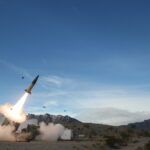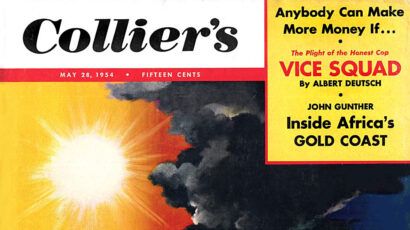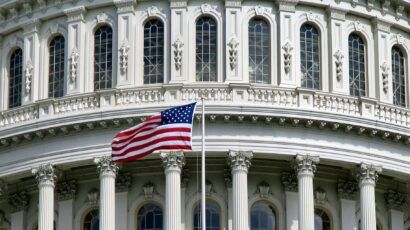A case for unilateral US nuclear warhead reductions
By Pavel Podvig | July 1, 2013
The call for nuclear disarmament that President Barack Obama made in his Berlin speech on June 19 was somewhat underwhelming. His proposed reductions—of up to a third from the 1,550 deployed strategic warheads allowed under the New Strategic Arms Reduction Treaty (New START)—were the least ambitious of the several options that the administration discussed last year. More importantly, Obama suggested that the reductions should come through “negotiated cuts” with Russia, rather than through unilateral US action.
The president did leave some room for unilateral reductions in his address, saying that the United States could continue to maintain effective deterrence “while reducing [its] deployed strategic nuclear weapons by up to one third,” but the fact sheet on nuclear weapons employment strategy released by the White House the same day used slightly different language, saying that the United States could maintain deterrence “while safely pursuing up to a one-third reduction in deployed strategic nuclear weapons.” The caveat of the words “safely pursuing” suggests that the reductions are conditioned on whether Russia joins the pursuit. Indeed, the discussion in Washington quickly focused on whether the president would have to conclude a new treaty with Russia and submit it to Congress, or whether the two countries could just reach an agreement to reduce their arsenals without the need to go through legislative approval. Either way, getting an agreement with Russia seems to be an essential part of the Obama administration’s call for new nuclear cuts.
That, unfortunately, dooms the entire enterprise from the start. Russian Foreign Minister Sergei Lavrov responded to Obama’s speech, saying that Russia would be ready to discuss further cuts only in a multilateral format involving all nuclear powers, declared and undeclared. This is of course only one of many excuses Russia could come up with to stall the disarmament process. A full list would likely include tying nuclear weapons reductions to such issues as missile defense, conventional strike capabilities, weapons in space, China—you name it. This is not to say that Russia’s concerns are completely without merit, but it is hard to see how any of these issues are relevant to the question of whether the number of deployed strategic weapons could be reduced by one-third from the New START level.
One of the problems that the United States will face in its attempts to get Russia on board with new nuclear reductions is that it has few incentives to offer, especially if it stays within the framework of New START. For Russia, the numerical ceilings established by the 2010 treaty are hardly a matter of importance. It is well aware of the fact that the United States maintains a sizable arsenal of reserve warheads—a hedge—that would allow it to deploy more than 4,000 strategic warheads on existing delivery systems, almost three times as many as the notional New START limit. The White House’s newly-released nuclear guidance confirmed the US commitment “to maintain a robust hedge against technical or geopolitical risk,” albeit probably at slightly lower numbers. With this hedge in mind, it doesn’t matter that much whether the United States reports 1,000 or 1,550 deployed warheads in its annual New START declarations.
This discrepancy may seem like an opening for future negotiations—the United States could offer to reduce the hedge and establish a verifiable limit on non-deployed warheads. But Russia has shown no interest in this kind of proposal; it accepted the reality of the US hedge, judging (probably correctly) that these numbers are not as important as they may seem. Also, for Russia a lower ceiling would mean curbing its strategic modernization program—under which it plans to build new nuclear warheads and delivery systems—just as money has started flowing to its defense industry. If there is budgetary pressure in Russia, it’s not the defense sector that feels it.
If offering a lower ceiling won’t work, then what might serve as an incentive to bring Russia to the negotiating table? One of the most important benefits of New START is the transparency and verification framework provided by the treaty. But this is the part of the treaty that Russia is likely to miss least, as it values secrecy much higher than transparency.
This leaves only one option: The United States could threaten to take Russia’s “nyet” for an answer and give up on New START follow-on negotiations. For Russia, the value of the treaty is not necessarily in the numerical limits or verification provisions. Rather, it is in the fact that New START codifies the special status of the US-Russian nuclear relationship, and gives Russia an opportunity to voice concerns about all kinds of US military policies and programs. What Moscow worries about most is that one day the United States might decide that it doesn’t particularly care if Russia develops another heavy missile with multiple warheads. Indeed, the Bush administration came very close to this stance when it pulled out of the Anti-Ballistic Missile Treaty in 2002 and openly questioned the need for new arms control agreements. That was not a happy time in Moscow, as it realized it was losing its coveted position as equal partner in nuclear arms control negotiations.
The Obama administration is facing a much more difficult task than its predecessor: The goal is to preserve the US-Russian nuclear arms reduction process, not kill it. But if the United States is serious about getting Russia on board with further nuclear cuts, it should start with unilateral reductions to its number of deployed warheads that go beyond the New START limits. Strictly speaking, these reductions would be reversible and somewhat symbolic, as the hedge is not going away any time soon and the legally-binding upper limit would still be set by New START. But they would demonstrate that the United States could set its nuclear policy without being held hostage to numerical parity with Russia.
Russia would then face a choice between joining the nuclear cuts and keeping the leverage that comes with being an active participant in the process, or risking a US decision to embrace unilateralism and steer nuclear policy in a discomforting direction, whether this means expanding missile defense or strengthening precision strike capabilities. This is a risk that Russia would not be willing to take. If it rejects a New START follow-on agreement, it would lose what little leverage over these issues it may now have. Russia, of course, would threaten to build more missiles and warheads, but it knows that this threat would ring hollow: The US Defense Department concluded last year that Russia “would not be able to achieve a militarily significant advantage by any plausible expansion of its strategic nuclear forces, even in a cheating or breakout scenario under the New START Treaty.” The United States indeed does not particularly care if Russia wastes its resources on new missiles. By unilaterally cutting its forces below New START levels, the United States would reinforce this message and make sure that Moscow gets it.
Given the political climate in Washington, unilateral reductions are not going to be popular or easy. But neither are they impossible. And at this point they probably offer the best chance of breaking the impasse on the way to deeper cuts of nuclear arsenals.
Together, we make the world safer.
The Bulletin elevates expert voices above the noise. But as an independent nonprofit organization, our operations depend on the support of readers like you. Help us continue to deliver quality journalism that holds leaders accountable. Your support of our work at any level is important. In return, we promise our coverage will be understandable, influential, vigilant, solution-oriented, and fair-minded. Together we can make a difference.
Topics: Columnists, Nuclear Weapons















